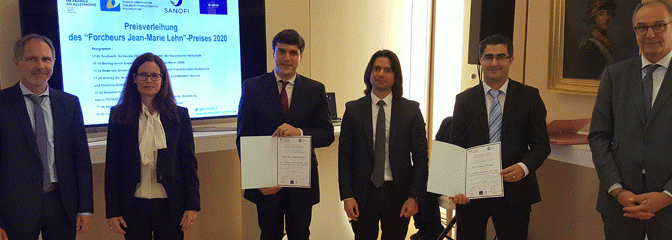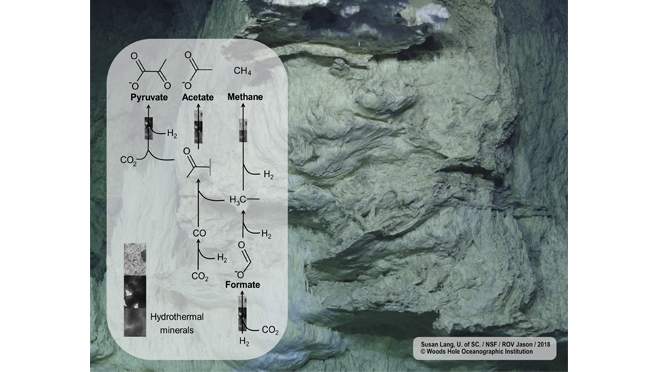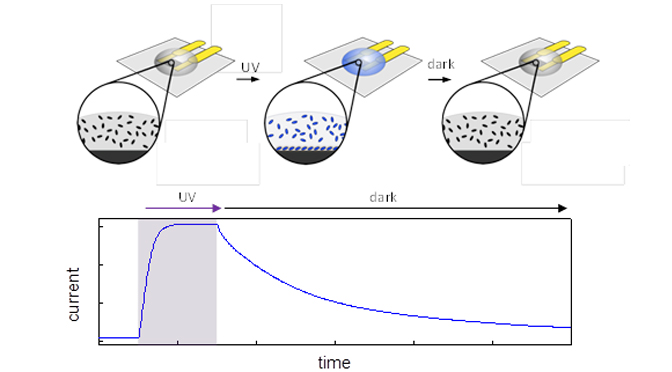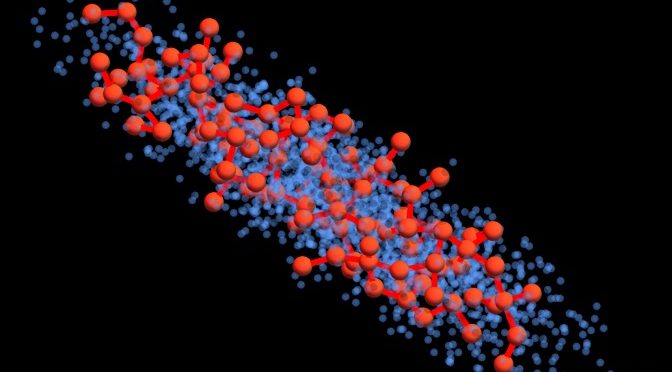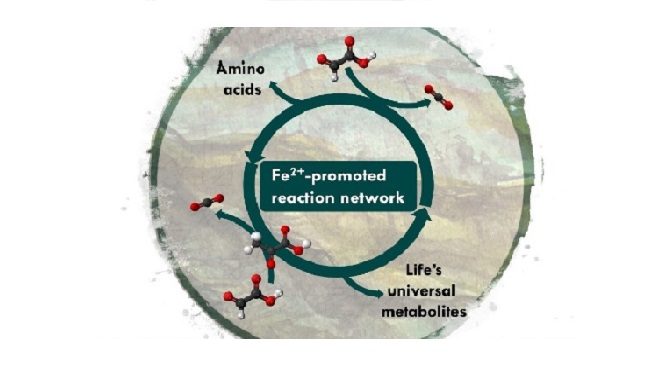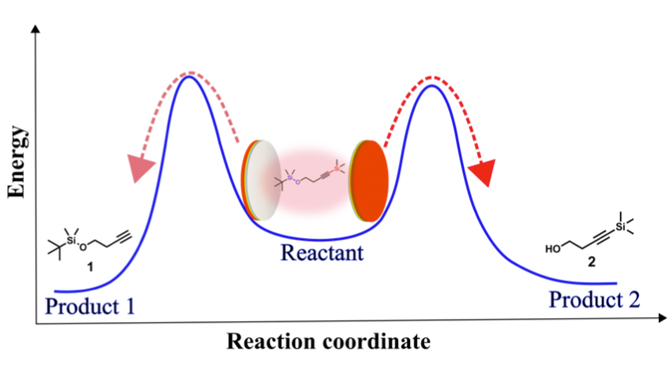Joseph Moran has received the 2020 “Forcheurs Jean-Marie Lehn” prize together with Harun Tüysüz (Max–Planck-Institut for Coal research, Mülheim, Germany) for their collaborative work on transition metals in prebiotic chemistry. The prize supports promising collaborations between young French and German researchers in the areas of health, pharmacology … Continue Reading ››
All posts by cschneider
When rocks lay the groundwork for the origin of life
Mineral catalysts found in deep-sea vents convert CO2 and H2 to biomolecules, showing striking parallels to known biological pathways
An international collaboration of researchers in Germany, France and Japan investigated the catalytic activities of minerals found in deep-sea hydrothermal vents. The results suggest that mineral-driven chemical reactions might be closely mapped onto microbial carbon metabolism. … Continue Reading ››
Graphene as a detective to unravel molecular self-assembly
Researchers from the University of Strasbourg & CNRS (France), in collaboration with Humboldt University of Berlin and DWI – Leibniz Institute for Interactive Materials/RWTH Aachen University (Germany), have demonstrated that graphene devices can be used to monitor in real time the dynamics of molecular self-assembly at the solid/liquid interface. Their results have been published in Nature Communications.
Signatures of self-organized criticality in an ultracold atomic gas
Self-organized criticality is an elegant explanation of how complex structures emerge and persist throughout nature1, and why such structures often exhibit similar scale-invariant properties2,3,4,5,6,7,8,9. Although self-organized criticality is sometimes captured by simple models that feature a critical point as an attractor for the dynamicsContinue Reading ››
The President Macron received part of the international researchers and students who participate in the “Make our planet great again” program (MOPGA)
Le Président de la République a reçu une partie des chercheurs et étudiants internationaux qui participent au programme « Make our planet great again » (MOPGA). Ils étaient une soixantaine en juin 2017, au lancement de l’opération, ils sont un peu plus de 200 aujourd’hui. Emmanuel Macron voudrait en faire les ambassadeurs … Continue Reading ››
The “Ministère de lʼEnseignement supérieur, de la Recherche et de lʼInnovation” has awarded the “Stars of Europe” trophy to the European project iSwitch and to Paolo Samorì, its coordinator .
The “Étoiles de l’Europe” prize rewards European research and innovation projects coordinated by French organizations and honors their coordinators who have made the choice of Europe and demonstrated their ability to lead large-scale networks. This year’s 12 “Stars of Europe” have been selected by a high-level jury for the scientific quality and international dimension of the project, the … Continue Reading ››
Presentation of the CNRS 2019 gold medal to Thomas Ebbesen and CNRS Grand-Est medal medals to four chemists.
The CNRS celebrated is 80th anniversary on 26 November in Paris, with an international symposium and an extraordinary ceremony for the 2019 Gold Medal—awarded to the physical chemist Thomas Ebbesen—in the presence of the French President, several ministers, as well as French and international research representatives. … Continue Reading ››
A bottle of Alsace wine slides along a zip line from the top floor of the Institut de science et d’ingénierie supramoléculaires
A bottle of Alsace wine slides along a zip line from the top floor of the Institut de science et d'ingénierie supramoléculaires (Isis) to baptize the new facade of its extension: Isis-2. After two years of work, the new building financed under the "Campus Operation" … Continue Reading ››
Mimicking life’s biochemical networks with Iron
Synthesis and breakdown of universal metabolic precursors promoted by ironResearchers in Strasbourg, France, have found that mixing two small biomolecules, glyoxylate and pyruvate, in iron-salt-rich water produces a reaction network resembling life’s core biochemistry. This discovery provides insight into how chemistry on the early Earth primed the evolution of the most ancient … Continue Reading ››
Mirrors change chemical selectivity
A chemical reaction transforms the molecules that make up matter. To influence chemical reactions, chemists typically act on the molecules themselves, rather than the space in which the reaction takes places. However, researchers at the University of Strasbourg have shown that chemical reactions can indeed be influenced simply by conducting them between two appropriately spaced mirrors, kept only micrometers … Continue Reading ››

